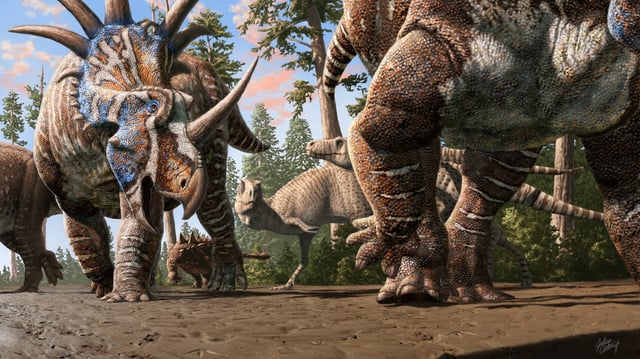Overview
- A July 2025 PLOS One study documents a 312-square-foot tracksite featuring at least five ceratopsian prints alongside an ankylosaurid and a small carnivore from 76 million years ago.
- Parallel tyrannosaur tracks found perpendicular to the herbivore prints suggest stalking behavior that may have prompted mixed-species grouping as a defense tactic.
- The initial discovery arose during an international field course in July 2024, marking the first major footprint find in a park long known for its skeletal fossils.
- Comparisons to modern wildebeest and zebra herds support interpretations that different dinosaur species moved together for mutual predator detection.
- Lead authors Phil Bell, Brian Pickles and Caleb Brown are using refined search-image techniques to identify additional tracksites across the park.
